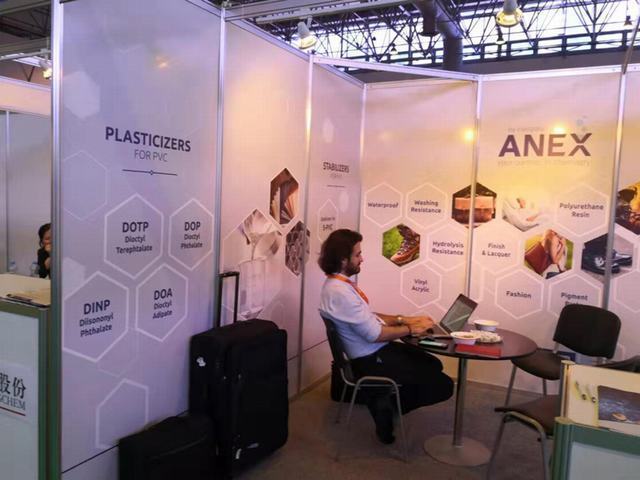What are the roles and advantages of organic trace elements zinc, copper, manganese and selenium?
Trace elements are essential nutrients for animal life support and production, and one of their characteristics is that they are used in small doses with large effects. Although the amount of trace elements in the organism is less than 0.01%, they are involved in almost all physiological and biochemical processes in the organism and are closely related to animal growth and health. They are involved in the formation and activation of enzymes, vitamins and hormones in the animal body; they are also involved in regulating the metabolism of substances and determining the growth, development and reproductive functions of the organism, as well as the productivity and product quality of the animal. Therefore, the supply and absorption and utilization of trace elements are crucial.

1
The role of trace elements
1.1 Zinc, copper, manganese and hoof disease in dairy cows
Hoof disease is one of the three major diseases in dairy farming and can cause huge losses to dairy farmers every year. Therefore, controlling hoof disease through feeding management and cow nutrition management is also a priority in dairy farming.
1.1.1 Zinc and hoof and limb disease
Zinc is a component of many enzymes and proteins in the animal body, is involved in many metabolic reactions, and is one of the most critical minerals in the hoof keratinization process. The enzymes activated by zinc are able to catalyze the differentiation of keratin-forming cells. Zinc is also essential for the synthesis of keratin and keratin, which enhance the hardness and integrity of the hoof; it is involved in the formation of collagen, which is directly involved in the division of primary chondrocytes and thus affects bone calcification. The amount of zinc in bone affects bone density; the higher the zinc content, the greater the bone density, and vice versa, the lower the bone density. When zinc is deficient, animals will experience pathological phenomena such as skin keratinization, reduced hoof hardness and integrity, hoof shell deformation and cracking, and abnormal bone development.
1.1.2 Copper and limb and hoof disease
Copper is a component of many enzymes, and copper activates cytochrome oxidase, lysyl oxidase, sulfhydryl oxidase, thiol oxidase, amino oxidase, etc. Copper deficiency leads to insufficient amounts of the above enzymes, resulting in insufficient energy supply to the keratinized cells; the integrity of the hoof keratinized cells is affected; the structural strength of the keratinized cell matrix is affected; and the formation of isocollagen and clavulanin is affected, which is not conducive to the formation of structurally complete collagen and scleroprotein with normal elasticity, so copper plays an important role in the formation of bone and keratin. Copper deficiency in dairy cattle can easily lead to hoof diseases such as hoof cracking, hoof rot and sole abscess.
1.1.3 Manganese and hoof disease
Manganese is an activator of many enzymes, and manganese deficiency in dairy cows can lead to deficiencies in the enzymes that promote the synthesis of acidic mucopolysaccharides in the cartilage and bone matrix, thus affecting the synthesis of cartilage and collagen; manganese deficiency in dairy cows can affect the synthesis of the chondroitin sulfate side chain of the proteoglycan molecule, which is an important component of normal cartilage and bone. Manganese deficiency in dairy cows leads to insufficient synthesis of carbohydrates that provide energy to hoof keratinocytes, which in turn affects keratinization of hoof keratinocytes. In animals deficient in manganese, cartilage growth is impaired and can lead to skeletal deformities. The deposition of other inorganic substances in the bones is also affected by manganese. Therefore, manganese deficiency in dairy cows can cause deformation of bones and joints of the limbs and lead to the occurrence of limb and hoof disease.
1.2 Zinc, copper, manganese, selenium and oxidative stress
Oxidative stress means that when the body is subjected to various harmful stimuli, the body produces too many highly reactive molecules such as reactive oxygen radicals and reactive nitrogen radicals, and the degree of oxidation exceeds the removal of oxides, resulting in an imbalance between the oxidation system and the antioxidant system, thus leading to tissue damage, which is an important factor leading to the development of the body and aging. The stronger the body’s resistance to oxidative stress, the less likely the cow is to contract disease.
1.2.1 Zinc and oxidative stress
Zinc plays an important role in the organism’s resistance to oxidative stress. Zinc prevents metal ions from reacting with hydrogen peroxide and superoxide to produce hydroxyl radicals. Zinc is one of the important metal cofactors of copper/zinc-superoxide dismutase (Cu/Zn-SOD), and zinc deficiency significantly reduces Cu/Zn-SOD activity. Zinc activates glutathione peroxidase (GSH-Px) in the body and reduces free radicals in the body. Zinc deficiency decreases the amount of active GSH-Px in the organism, resulting in increased lipid peroxidation, which leads to increased GSH-Px depletion and decreased activity. Zinc also induces the synthesis of metallothionein (MT) in the liver, which counteracts the damage caused by free radicals.
1.2.2 Copper and oxidative stress
Adequate amounts of copper have an antioxidant stress effect in organisms. Copper is an essential component of copper cyanobactin, which has an anti-free radical damage effect; copper is the active center of copper/zinc-superoxide dismutase (Cu/Zn-SOD) in the enzymatic antioxidant system. Copper deficiency leads to a significant decrease in the amount of copper cyanobacteria and the activity of Cu/Zn-SOD, resulting in a decrease in the antioxidant capacity of the organism. Copper deficiency can lead to the deposition of iron in the tissues of the organism, and iron can lead to the production of free radicals.

1.2.3 Manganese and oxidative stress
Manganese is an important component of Mn-SOD, which is mainly found in the mitochondrial matrix and is a free radical scavenger in living organisms, and its main role is to avoid damage to mitochondrial membranes by free radicals. Manganese deficiency will reduce the activity of Mn-SOD, thus reducing the antioxidant capacity of the organism.
1.2.4 Selenium and oxidative stress
Selenium is a component of glutathione peroxidase (GSH-Px), an important component of the cellular antioxidant system that reduces peroxidized lipids and ensures the integrity of biological membranes. Selenium deficiency not only leads to fetal coat failure, but also impairs the bactericidal ability of neutrophils, leading to increased mastitis.
1.3 Zinc, copper, manganese, selenium and immune function
1.3.1 Zinc and immune function
Zinc is one of the most essential trace elements in the immune system of the body, and its various biochemical functions are important for maintaining the normal immune function of the organism. Zinc deficiency can damage the function of the thymus gland, reduce the phagocytosis of neutrophils and macrophages, reduce the activity of natural killer cells, increase the chance of viral and bacterial and mycobacterial infections; increase the chance of infection and inflammation in the cow’s organism.
1.3.2 Copper and immune function
Copper plays an important role in the immune process of the organism. Copper deficiency reduces the number of lymphocytes in lymphoid tissues and organs. Copper is an important structural component of serum immunoglobulins, and copper deficiency leads to defective T-lymphocyte function. Copper also activates the activity of natural killer cells, macrophages and the function of lymphokines, whose role is mainly bactericidal and bacteriolytic, and plays a role in phagocytosis and antibody defense capacity. Copper deficiency causes a decrease in cellular immunity, humoral immunity and non-specific immune function.
1.3.3 Manganese and immune function
Divalent manganese can stimulate the immune organs to produce immune cells, thus enhancing the cellular immune function of the body. Manganese can increase the content of interferon in the body and enhance the phagocytosis of macrophages. Manganese deficiency can lead to the decrease of the weight of immune organs such as thymus and spleen. Insufficient or excessive manganese can inhibit the production of antibodies.
1.3.4 Selenium and immune function
Selenium deficiency reduces the ability of neutrophils in the blood and milk of cows to kill mastitis pathogens and reduces the amount of free radicals in neutrophils. Reduces the phagocytosis of macrophages and the function of lymphokines. This leads to a decrease in the immunity of the cow’s organism and makes her susceptible to mastitis.
1.4 Other effects of zinc, manganese and copper
Zinc has the effect of regulating appetite, manganese is necessary for the synthesis of cholesterol, which is the precursor material for the synthesis of steroid hormones, estrogen, progesterone and testosterone, so the lack of manganese leads to the disruption of the estrous cycle of cows and affects reproduction. Copper is also one of the elements of heme synthesis like iron, and copper deficiency will lead to copper deficiency anemia.

2
Advantages of organic trace
2.1 High bioavailability
Organic trace elements have higher bioavailability compared to inorganic trace elements. It is mainly because the general trace elements inorganic and organic salts must be absorbed by the body only after they are ingested by moving objects and form chelates or complexes with amino acids or other substances by the action of coenzymes. The absorbed metal elements can only be effective when they are combined with proteins and transported to the parts of the body that need them. Zinc methionine, copper methionine and other amino acid chelates or complexes are the main forms of absorption and transport of metal ions in animals, and they are also the main intermediates of protein synthesis process in animals, which are not only absorbed quickly, but also can reduce many biochemical processes and save energy consumption, thus making them have high biological potency. In addition, there is a pool of essential amino acids in animals, and organic trace elements whose ligands are essential amino acids are more easily stored in the body in the form of amino acids or small peptides, preventing them from being rapidly metabolized, thus increasing animal trace element body reserves. Therefore, compared with inorganic trace elements, organic trace elements are used in smaller amounts and are safer and more effective.
2.2 Reduction of mutual antagonism of mineral elements
Inorganic trace elements are characterized by instability and easy binding, and the possibility of interaction is easier than other substances. These interactions occur between feeds, and there are many antagonisms between trace elements in the process of digestive tract tissue and cellular metabolism and with macronutrients in the process of absorption and excretion, transport and metabolism, and functional performance. This antagonism occurs in the digestive tract mainly in the form of: ① simple chemical reactions between elements. Such as too much magnesium in the diet, in the digestive tract can form magnesium phosphate, thus preventing the absorption of phosphorus. ② adsorption by colloidal particles. If iron and manganese have the same electron orbitals, configuration and coordination number, they can be fixed on the surface of non-soluble magnesium or aluminum salts, thus reducing the absorption of iron and manganese in the digestive tract. (iii) Ions compete for carriers in the intestinal wall. Both copper and zinc are absorbed in the small intestine, and they can compete with each other for binding sites in metallothionein or intestinal mucosa, which leads to mutual absorption inhibition. The absorption of organic trace elements in the animal organism differs from that of inorganic salts in that amino acid and protein chelates are absorbed in the form of amino acids or peptides using the absorption mechanism of peptides and amino acids. Therefore, there is no mutual antagonism, thus the dosage is more controllable and reasonable.
2.3 Avoid antagonism with anti-nutritional factors in feed
For example, neutral detergent fiber (NDF) can combine with divalent iron to affect absorption; phytic acid can combine with divalent copper, iron and zinc to generate precipitation, thus reducing absorption; while the metal ions in organic trace elements are located in the center of chelates, and after combining with ligands through coordination and covalent bonds, their intramolecular charges tend to be neutral, forming a stable structure that will not be absorbed by the daily diet. The metal ions in the organic trace elements are located in the center of the chelate, and after binding with the ligand through ligand and covalent bonding, their intramolecular charge tends to be neutral, forming a stable structure, which will not be combined with the anti-nutritional factors in the diet and affect absorption.
2.4 Stronger antioxidant and immune enhancement ability
Recent studies have shown that organic trace elements are better than inorganic salt trace elements in improving immune function, improving intestinal health and reducing stress. It can enhance the body’s pain resistance, maximize the body’s immune response, promote cellular and humoral immunity, and play an anti-stress and anti-disease role.
2.5 Chemical stability
Inorganic salt molecules, anions and cations through electrostatic formation of insufficiently stable ionic bonds, so it is very easy to chemically react with other substances, the chemical structure is extremely unstable; while organic trace with trace element ions as the center, the oxygen and nitrogen atoms in amino acids wrapped in the trace elements outside the trace elements, the trace elements closed, which makes it a relatively stable chemical properties, also makes the charge within the molecule tends to be neutral, in The metal ions can be effectively protected in vivo, thus avoiding adverse reactions with substances such as gastric acid in the gastrointestinal tract and other ingredients in the diet. In particular, amino acid chelates are bound by ligand covalent bonds and are more stable than complexes bound by ionic bonds.
3
Conclusion
Trace elements are essential nutrients for dairy cows, and both excess and deficiencies can have adverse effects on the organism. Compared with inorganic trace elements, organic trace elements are more effective in increasing feed intake, improving growth rate and fertility, improving product quality and immunity, antioxidant function, and reducing stress, etc. Their better safety and stability can effectively avoid the damage of trace elements to other nutrients, reduce antagonism of trace elements, and improve the utilization efficiency and breeding safety of trace elements.
Translated with www.DeepL.com/Translator (free version)

